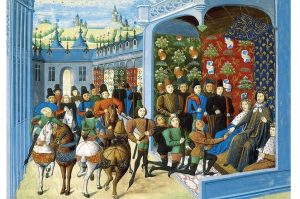Since the publication of his debut, Remainder, Tom McCarthy has established himself as the Christopher Nolan of literary fiction: his novels play with conceptual themes such as time and motion and space. C and Satin Island were both shortlisted for the Booker. His latest, The Making of Incarnation, deals with, among other things, motion-capture technology. Even the title of the science fiction film at the heart of the novel — Incarnation — has a Nolanesque ring to it.
The story is knotty. As the narrator puts it: “Things are connected to other things, which are connected to other things.” McCarthy fictionalizes the life of the engineer and motion-studies pioneer Lillian Gilbreth, who did her key work in the interwar years. Here, she captures life through a collection of small boxes. One of these, Box 808, gets lost. Another thread features Mark Phocan, who works as an engineering consultant and motion-capture specialist in a company called Pantarey Motion Systems, and later goes on a trail to find the missing Box 808.
In one striking section early in the novel, a young couple are invited to have sex while attached to sensory-motion detectors. The woman asks if anyone will be watching and is told: “Only the sensors. You have total privacy.” The question of privacy is related to the notion of ownership, and is explored in yet another thread, concerning Monica Dean, a lawyer at the LSE who deals in copyright.
The Making of Incarnation is a feast for geeks. It involves physics, film production and copyright law, and will also test your knowledge of Greek and German. McCarthy’s characteristically intricate, looping sentences are on display. When Phocan as a schoolboy visits Tate Modern with his class, there are:
“two sets of bare legs towering above them like the trunks of redwood trees, parallels playing perspectival tricks by narrowing and widening out into thighs before converging at what should have been infinity but was in truth a mere two feet away into unfoliaged waist canopies.”
You get the picture. Indeed, visual sensations are among the novel’s most arresting features. The problem is that the characters get squished out. There are passages that seem suspended by its own cleverness, and reading them is like putting on a pair of glasses far above your prescription level: there is too much to take in within a small frame.
McCarthy has a deep interest in science, philosophy and history. But in his earlier novels, especially Remainder, the characters and plot felt more in sync. The Making of Incarnation is conceptually fertile, but novelistically lacking. Neel Mukherjee describes it as “utterly new.” But novelty is not the same as merit.
This article was originally published in The Spectator’s UK magazine. Subscribe to the World edition here.


















